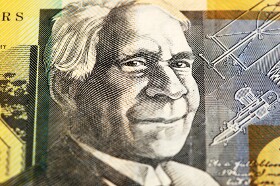The Australian dollar rose against the Japanese yen and the US counterpart, though retreated versus the euro, as risk appetite again reappeared among Forex traders after Spain met its target on a debt auction and amid speculations about quantitative easing from the Federal Reserve.
Worries about the eurozone and its problems eased, while speculators were hoping that the Fed would announce more stimulating measures tomorrow. Resulting optimism translated to various markets, leading to a rally that followed an earlier decline. The Standard & Poorâs GSCI Index of 24 commodities added 0.8 percent. The MSCI Emerging Markets Index climbed 1 percent, touching the highest level in five weeks.
The minutes of the Reserve Bank of Australia monetary policy meeting on June 5 showed that the central bank was fairly optimistic regarding domestic fundamentals:
Members noted that indicators of recent economic activity had been mixed but, on balance, suggested continued moderate growth.
The European sovereign-debt crisis was the reason for the last interest rate cut:
There was clear evidence suggesting a softening in global conditions, and uncertainty about the future in Europe had increased significantly. While spillovers had been limited thus far, there was a reasonable likelihood that the tendency toward precautionary behaviour both abroad and at home would intensify.
There is a possibility of additional rate cuts from the RBA, but the positive outlook for the Australian economy played in favor of the Aussie.
AUD/USD rose from 1.0127 to 1.0189 and AUD/JPY climbed from 80.07 to 80.50 as of 22:48 GMT today. Both currency pair touched the highest level since the beginning of May. EUR/AUD advanced from 1.2418 to 1.2448 and its daily maximum was at 1.2479.
If you have any questions, comments or opinions regarding the Australian Dollar,
feel free to post them using the commentary form below.
